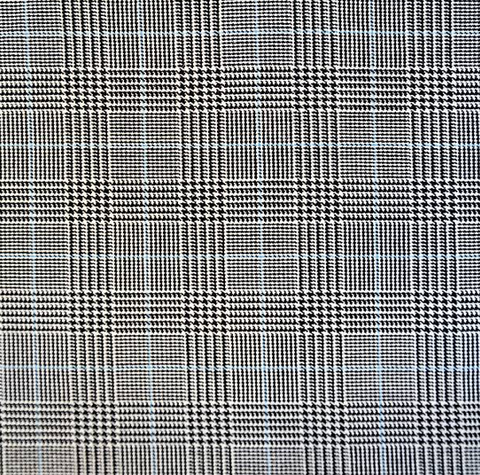One thing that we find in every season and each parade: the checkered patterns! Even if they are very similar, they each have their specificities. We present to you today our top 4 checked patterns: tartan, prince of Wales, Vichy and Pied-de-Poule.
Tartan pattern

Do you see the iconic dear tailor in Clueless? Or the famous Scottish square on kilts? This is the tartan motif.
Since the 15th century, it has been on Scotland but has been marketed from the 19th by making a way in American women's fashion. He is today one of the stars of fashion shows and has seduced punks like the Bucherons (the famous shirt!), Aristocrats like hipsters.
It is one of the most widespread and recognizable reasons. What pleases is that it is very distinctive but also infinitely duplicable. Red, yellow, green, ... The tartan is carried by all colors, on all kinds of clothes, for all occasions.
→ What is it? When we talk about tartan, we talk about a wool fabric composed of a series of vertical and parallel lines that will be repeated horizontally to form a color block. It is a particular grid called "sett".
The Prince of Wales motif

The origin of the Prince of Wales motif would date back to the beginning of the 19th century (we use the conditional because it is the most popular theory, but there are others ...), when an English group emigrates to Scotland.
Unable to bring the reasons for local clans (following a law decided by George IV, king of the time), new immigrants adopted a distinctive emblem to dress. They choose an Scottish motif, known as "Glenurqhart Plaid".
It was at the end of the 19th century, under the coronation of Édouard VII, that this reason was used for the costumes of the heirs of the throne of England, and adopted the name "Prince of Wales". He later became the key motif for the tailor -made costumes of his successor, Edward Albert. The Prince of Wales motif is therefore a real icon of style.
The motif has spread around the world, even becoming one of the favorites of great creators like Ralph Lauren and Michael Bastian.
→ What is it? The Prince of Wales is a particular motif of wool fabrics, characterized by a large square pattern with alternate patterns of smaller squares and a-gowdoor. The tiles can be "full" or decorated with color wires.
The Vichy motif

Often associated with picnic tablecloths and jam pots, the Vichy (Gingham in English) motif has been a must for several centuries.
There are two theories as to its origin (we let you choose the one you prefer 😉) :
- The Vichy motif was first made in Asia, probably in Malaysia: the word Malaysian “Genggang” (striped) provides the root of English Gingham.
- Others suggest that "Gingham" would be an anglicization of Guingamp, a French city, where a checked canvas was made from the Middle Ages.
Whatever origin, it was popularized by Dutch and English clothing manufacturers in the 1700s.
Since then, it has been associated with American and English identities, thanks to its traditional diagram of red and white or blue and white colors, its appearance in the Magician of Oz and his popularity during the Second World War. This emblematic motif was also the favorite of the most famous women in history, notably Marilyn Monroe, Brigitte Bardot and Jackie Kennedy.
→ What is it? It is a woven cotton pattern, repetitive checkered, generally white contrasted by a bright color. Vichy is geometric and mathematically predictable, it has the same appearance of all sides.
The Pied-de-Poule motif

The pitch is an abstract black and white checkerboard, which vaguely looks like the foot of a pool. He appeared for the first time in the 1800s in Scotland. It was mainly used on the exterior clothes of the banks, in woven wool.
We told you about clans in Scotland a little higher, the Pied-de-Poule motif quickly established itself as a neutral motif for those who did not want to participate in these clan distinctions.
Its popularity appeared in the fashion world in the 1930s, when it was adopted by the upper class as a symbol of wealth. Christian Dior was one of the first creators to incorporate the pitch in his creations for the Haute Couture Spring-summer collection from 1948. Designers from all over the world redefined the traditional pied-de-poule while playing with its colors and size.
This pattern is also the pattern worn by cooking professionals. The reason ? It is very effective in hiding stains, inevitable when working in the kitchen!
→ What is it? The pied-diligate pattern has tiles linked together by extensions to the corners. It is traditionally produced with groups of 4 black and white wool threads. Its graphic side allows it to give a 3D visual illusion.
At Little Dudes, the checkered patterns we love! Tartan, prince of Wales, Vichy or Pied-de-Poule, make your choice with our selection of fair brands for the planet, for the health of our children, and for human working conditions.
Take a look at Mini Rodini, Hello Simone, The Campamento, Longivethequeen, Maed for Mini To dress your children with pretty checkered patterns.
→ I discover
